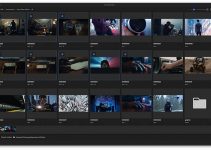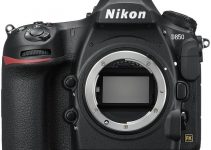Without a doubt, the most fundamental technique you can use in your video editing workflow when moving from one shot to another is the cut. It became not only an industry standard in editing over the years but also has multiple variations that when utilised accordingly can help you take your creative workflow to a whole new level.
By showing a series of examples in his video essay, director/editor Joey Scoma from RocketJump Film School will walk us through the numerous forms of cuts and transitions one can use when editing. No matter whether you are utilizing those for your narrative, documentary or commercial project they can help you advance the story, change perspective and literally take the plot in any direction you want. As Joey highlights, it’s up to you and your creativity to decide when and why you’d use them.
The first technique mentioned in the video above is Cutting on action. The basic idea of this method is that the editor cuts from one shot to another while the subject is still in motion. It’s needless to say that this technique can be seen in every action movie, but it can also be used on many other occasions. Overall, cutting on action can help you to get a much smoother transition between shots and create more tense action in your scene.
In a similar way, you can use the Cut Away. In a nutshell, it’s a cut to an insert shot and then going back to the main action. The insert could exist in the same space as the characters, or it can also emphasize specific details by taking the audience away from the main action or subject.
Intercutting back and forth between different locations or scenes that are happening at the same time in different spaces is Cross-cutting. Also known as parallel editing, this technique can help you to tell two simultaneous stories at once while the story unfolds. When used effectively, cross-cutting is an excellent way to pump up the tension and suspense of a given scene. This technique can also be used to show what’s going on in character’s mind at a certain moment in time.
There’s another editing technique knows as the Jump Cut. In essence, a jump cut happens when two sequential shots of the same subject in the same scene are cut together from camera positions that vary only slightly. It’s often used to show deliberately the passing of time. Jump cuts can also be used to add more urgency and tension to a scene. A jump cut is often used intentionally in strategic and creative ways to draw attention to a particular part of a scene that otherwise is supposed to go un-noticed.
Further, a Match Cut can often be incorrectly referred to a Jump cut. However, there is a particular difference. A Match cut moves the story from one shot to a similar one by either matching the action or the composition of a scene. This technique is mainly used as a scene transition by literally jumping from one place to another by creating a logical coherence between shots. It’s most effective when you need to move the narrative along through establishing a strong continuity of action and linking the two shots metaphorically.
Another way to abruptly cut from one shot to another for an aesthetic, narrative, or emotional purpose is by utilising a Smash cut. The obvious and clichéd example of this editing technique is a character suddenly waking up from an intense dream or a nightmare. Smash cutting can also be used to comedic effect or go from extreme action to a quiet scene or vise verse.
From the list of cuts covered in the video the Invisible cut is my personal favourite. Invisible cuts are frequently used in feature-film editing to provide consistency and believability, the building blocks for creating an emotional connection with the viewer. They are also an excellent way to jump from one shot to another without any noticeable differences by creating the illusion of a single take. You can also hide a cut within a camera movement or simply by an object crossing the frame.
Speaking of essential editing techniques, we can’t miss the L-Cuts and J-Cuts as well. L-Cut appears in film or video, where the picture and sound are synchronized but the transitions in each are not coincident. In other words, when your audience is hearing the audio from the previous shot, but already sees another shot is a result of an L-Cut. J-Cut is essentially the opposite of the L-Cut – the picture changes, but the audio continues. The latter is also excellent for revealing a new element within a scene.
Of course, there are many other ways to intercut between two shots or scenes when editing such as Wipes, Fade-Ins and Fade-outs, Cross Dissolves, etc. as well as a plethora of complex creative combinations of all of these. As-a-rule-of-thumb, each of those techniques should be used to aid subtly the flow of the plot as the story unfolds seamlessly thus keeping your audience immersed in the story you want to tell. If you have more favorite cuts and transitions that you are using in your daily editing workflow, feel free to share those in the comment section below.
[source: RocketJump Film School]
Disclaimer: As an Amazon Associate partner and participant in B&H and Adorama Affiliate programmes, we earn a small comission from each purchase made through the affiliate links listed above at no additional cost to you.



